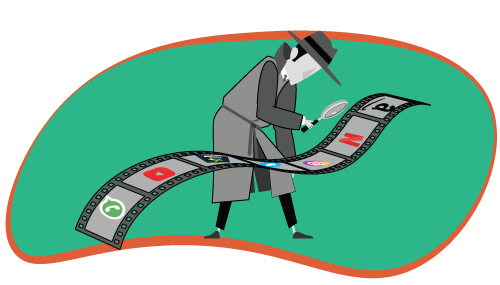Social Media & OTT: Regulating Over-the-Top Content

Recently, the central government released regulations for governing the hitherto unregulated OTT and social media platforms.
An Over the top (OTT) media service is a service offered / availed directly via the internet. One does not need the conventional set up of television, cable network, dish or satellite, set top box for streaming or viewing content through OTT. An internet connection will suffice. For this a fixed subscription has to be paid by the viewers. They can be accessed through computers – desktops, laptops, smart phones, tabs, smart TVs and even video gaming consoles. Netflix, Amazon Prime, YouTube, Disney Hotsar and the several such other streaming services come under the ambit of OTT platforms. Facebook, WhatsApp, Instagram and Twitter are the major social media platforms.
On an average, 50 crore people use either one or all of the social media platforms. The number is just growing. As a result, the digital platforms have become a playground for voicing opinion and sharing content. There have been growing instances of false, vicious, disturbing, and explicit content on all social media platforms which have been unregulated and not subject to a regulators’ scrutiny.
In order to address this vast grey area, the government, in consultation with users (general public) and stakeholders framed the Information Technology (Intermediary Guidelines and Digital Media Ethics Code) Rules 2021 in exercise of powers under section 87 (2) of the Information Technology Act, 2000 and in supersession of the earlier Information Technology (Intermediary Guidelines) Rules 2011.
The I&B minister stated that social media platforms are welcome to do business in India. Public can use social media platforms for asking / raising questions and criticize the government, functionaries and its policies. However, the digital platforms will be subject to governance without however curbing freedom of speech and expression of the users / public.
A look at key highlights:
- The guidelines expressly contain definitions which make it easy to understand the entity that comes under the purview of these guidelines. Important among them being “social media intermediary” (SMM). It is defined as an intermediary which primarily or solely enables online interaction between two or more users and allows them to create, upload, share, disseminate, modify or access information using its services. A “significant social media intermediary” (SSMM) means a social media intermediary which has registered users over and above the threshold notified by the Government of India.
- The guidelines expressly lay down rules for due diligence mechanism by the social media intermediary (SMM). The SMM shall expressly lay down its rules, regulations, policies and content that cannot be uploaded on its platforms. Periodic changes in such rules and policies must be uploaded on the platform for user awareness. Additionally, due diligence includes the appointment of a compliance officer responsible for ensuring compliance of Acts, Rules and related policies of the government.
- The guidelines contain a code of ethics and safeguards in relation to digital media including publishers of news and current affairs as well as curated content. A three-tier structure is proposed to be put in place:Level I – Self-regulation by the publishers;
Level II – Self-regulation by the self-regulating bodies of the publishers;
Level III – Oversight mechanism by the Central Government.
Level 1 is a self-regulating mechanism by the publisher (of news, current affairs and curated / online curated content) by appointing a Chief compliance officer /grievance redressal officer / nodal contact officer / and following the grievance redressal mechanism laid down in the guidelines. Such officer(s) have to deal with any issues relating to Code of ethics. Level 2 is a self-regulating mechanism by one or more self-regulatory bodies of the publisher being an independent body constituted by publishers or their associations. Such body shall be headed by a retired judge of the Supreme court or High court or an eminent person with experience in the field of media, broadcasting, human rights etc. such body shall be registered with the Ministry of I & B. such body shall essentially ensure the adherence to code of ethics and ensure grievance redressal as laid down in the guidelines.Level 3 is an oversight mechanism by which the Ministry shall publish a charter and Code of practice for self-regulating bodies of the publisher. It shall set up inter departmental committees to hear grievances and issue appropriate guidance, directions and advisory to publishers. The Ministry has powers to remove and or block any information on emergency basis if it is of the view that an prolonged publishing such content will cause irreparable damage. - The Code of ethics categorically lay down inter alia:(i) Legislations governing news and current affairs and general principles governing publication of curated content. Publishers have to keep in mind the following before transmitting / publishing / exhibiting any content after considering its implication on: – The sovereignty and integrity of India; – threatens, endangers or jeopardises the security of the State; – affects friendly relations with foreign countries
– affects law and order of society
(ii) Classification on content shall be mandatory for OTT platforms which publish / transmit curated content. 5 classifications shall be in place based on age:
- U (Universal): suitable for all age viewing
- U/A 7+: suitable for viewing by ages 7 and above. For below 7 years with parental guidance
- U/A 13+: suitable for viewing by ages 13 and above. For below 13 years with parental guidance
- U/A 16+: suitable for viewing by ages 16 and above. For below 16 years with parental guidance
- A (Adult): restricted to adults 18 years and above.The classification is based on theme/ subject, language, violence, sex, nudity, substance abuse etc. The classification and revision in classification shall be periodically updated by the Ministry.
- The code lays down guidelines Safeguarding safety and dignity of users: any objectionable content including partial or full nudity, objectionable, morphed images especially of women users must be removed within 24 hours by the social media platform on which it is put up.
- The onus of finding out the first “originator” who publishes scandalous or mischievous content is on the social media intermediaries. This is only in relation to content that affects the sovereignty of the country, relations with neighbour countries, sexually explicit content.
The proposed rules and guidelines are in response to increasing incidents of false, mischievous, and disturbing content being published across social media / digital platforms. As a result, online safety of women and children is at stake. Rampant abuse is also widening the religious, caste and political divide. Financial frauds are on rise.
These rules are intended to empower users to seek redressal of their grievances and ensure transparency and accountability of the social media / digital platforms. Time and implementation of the Rules will speak of their effectiveness. The Rules notwithstanding, every individual user should subject themselves to self-regulation and ensure they do not go over the top with defaming, damaging and salacious content.
For full text of guidelines:
http://egazette.nic.in/WriteReadData/2021/225464.pdf

